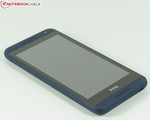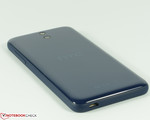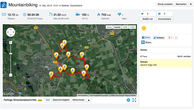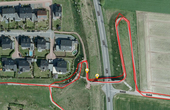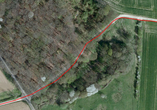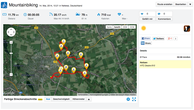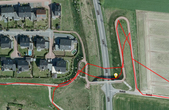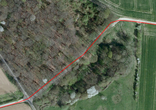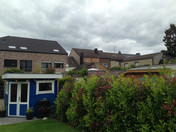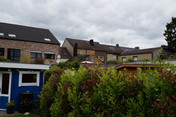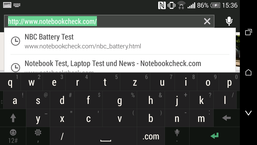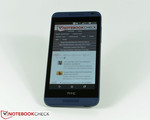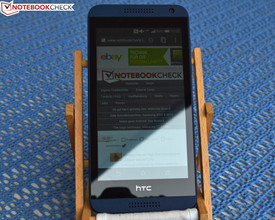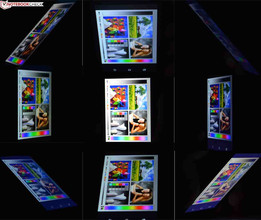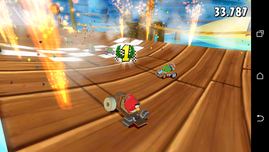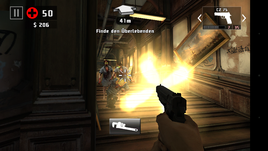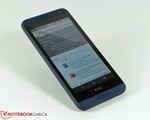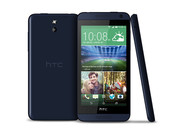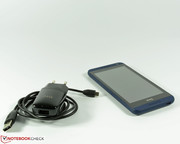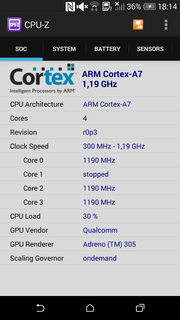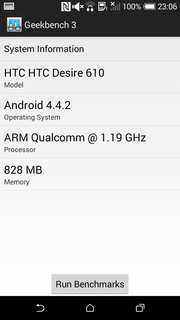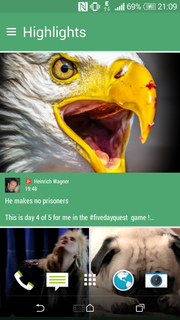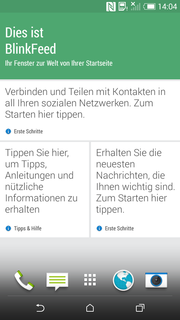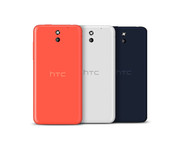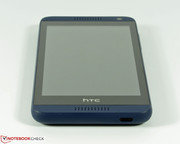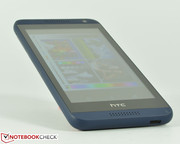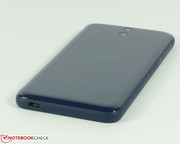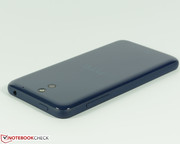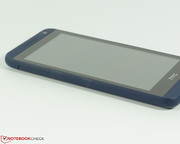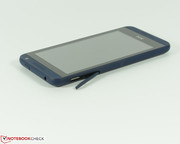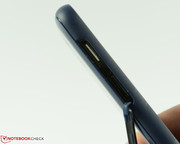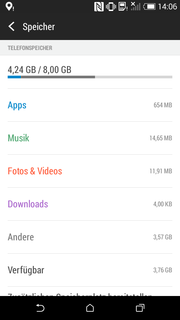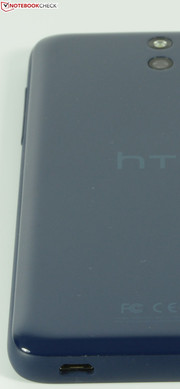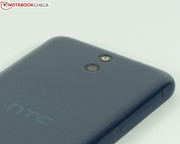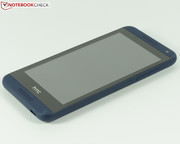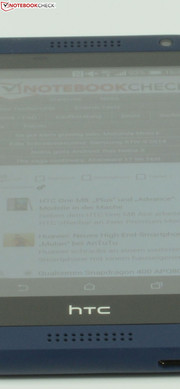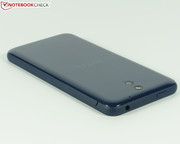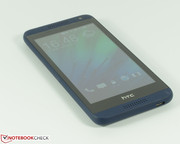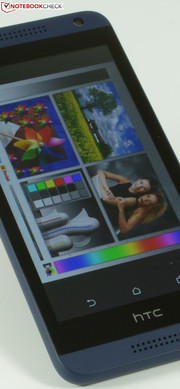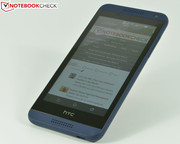HTC Desire 610 Smartphone Review
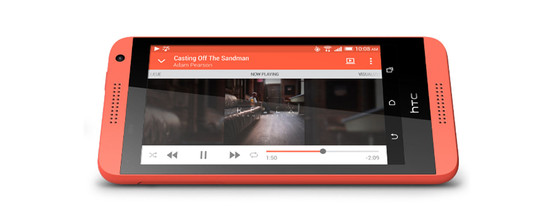
For the original German review, see here.
On their website, HTC promises "impressive features and surprising affordability" for smartphones in the Desire-family, which are supposed to be powerful and elegant, yet inexpensive. The newest member is the Desire 610, a middle-class smartphone with a 4.7-inch display (qHD, 960 x 540 pixels), a fast quad-core Snapdragon 400 SoC from Qualcomm (1.2 GHz), as well as LTE support. The other specs: 1 GB RAM, 8 GB flash storage (expandable via a microSD card), plus Android 4.4 KitKat with the HTC Sense 6.0 user interface. The HTC Desire 610 retails for about 300 Euro (~$405) and is available in blue, gray, green, orange, white, and black.
Equipped as above, the smartphone competes with the Huawei Ascend G730, the Samsung Galaxy Core LTE SM-G386F, the LG G2 Mini, as well as the Zopo ZP1000. Is the performance good enough for a place near the top?
Case
The case of our dark blue review model is made from resilient polycarbonate. The build quality is high and the phone is torsionally very rigid. Only when we subjected the display to higher levels of pressure than would occur in normal use, we saw some discoloration. The design is typical for HTC with stereo speakers up front. Those users who'd like to add a little color to their life should be happy, as the Desire 610 is available in blue, gray, green, orange, white, and black.
Although the smartphone doesn't feel as upscale as the recently tested HTC One M8, it's still quite good for the price bracket. We don't really understand why HTC didn't continue the matte and non-slip design on the front and sides, but opted for a high-gloss finish on the back instead. The approach doesn't appear to be thought out well, since the back is slippery and attracts dirt and fingerprints.
With a weight of 143 g and overall dimensions of 69.54 x 142.6 x 9.66 mm, the phone is fairly compact, although some competitors are slimmer still. The battery with a capacity of 2040 mAh is unfortunately permanently integrated and can't be swapped by the user.
Connectivity
The HTC Desire 610 comes equipped with a Qualcomm Snapdragon 400 MSM8226 Quadcore SoC with a core frequency of 1.2 GHz and an integrated Qualcomm Adreno 305 GPU clocked at 450 MHz. 1 GB of RAM and 8 GB of flash storage (4.24 GB usable) round out the hardware. The storage can be expanded with microSD cards up to a capacity of 128 GB. The corresponding slot as well as the slot for the nanoSIM card are hidden under a flap on the left edge of the smartphone.
The Desire 610 lacks any other physical connection aside from a Micro-USB 2.0 port and a 3.5 mm headphone jack. The ports have ample space between them and thus don't interfere with each other.
Communication & GPS
The HTC Desire 610 has a normal-sized SIM-card slot and supports Quadband GSM (850/900/1.800/1900 MHz) as well as Triband UMTS 3G/3.5G/WCDMA (850/900/2.100 MHz) with HSPA+ at up to 42 Mbps. The faster 4G/LTE (800/900/1.800/2.600 MHz) protocol is also supported and allows download and upload speeds of up to 300 Mbps and 75 Mbps, respectively.
For wireless transfer, the phone supports 2.4 GHz WLAN 802.11b/g/n and Bluetooth 4.0 with aptX. Wireless reception is, according to our tests, below average. 10 m away from our router through three walls we only had one bar in the signal-strength indicator; at times, we lost the connection completely. Other smartphones have much better signal strength.
To determine location information, the Desire 610 makes use of a A-GPS module. Inside, the phone was able to give us a rough idea of our location; outdoors the accuracy improved significantly. Our navigation test during a bike ride - here we compared the 610's performance to a Garmin Edge 500 - paints a very positive picture. The differences to the dedicated navigation GPS are minimal, even during the more difficult segments like the ride through the forest. The HTC Desire 610 is well-suited as a navigational tool even when somewhat higher accuracy is required.
Telephony and Voice Quality
No issues here. The HTC Desire 610's phone app functions like the standard Android equivalent and operation isn't difficult at all. The voice quality is very high for both conversation partners, no matter if the phone is used in a regular manner or if the speaker phone is active. The person on the other end attested very good quality with barely any background hiss.
Cameras & Multimedia
The HTC Desire 610 has a FSI-sensor equipped webcam with a resolution of 1.3 Megapixel, which also records videos in 720p. The quality is decent and good enough for selfies - provided the environment is bright enough. The main camera features a BSI sensor, has a fairly high resolution of 8 Megapixel, and an aperture of f/2.4. Videos are recorded in Full-HD.
To get an idea of the picture quality, we look at the output of various competitor and a good SLR camera. The comparison shows that the HTC Desire 620 overexposes photos and that the colors are a bit washed out and not quite true to nature. Sharpness is also lacking somewhat. The LED flash works well, but only in close proximity of the object to be photographed. The main camera is sufficient for snapshots if the user doesn't have his or her expectations set too high.
Accessories & Warranty
HTC includes a modular 5V USB power adapter and a quickstart guide. Optional accessories are available as well: the manufacturer offers an external battery pack as well as stereo headphones in their online store. In Germany, the Desire 610 is protected against manufacturers defects for a period of 24 months. At the time of writing, HTC didn't offer any warranty extensions.
Input Devices & Operation
The virtual keyboard is more or less equivalent to the standard Android keyboard, although optional HTC Sense features - like the overlay of the arrow keys in portrait mode - enhance the usefulness and make the operation easier. Even in portrait mode, the size of the keys is sufficient to ensure accurate typing. In landscape mode, the visible screen area is reduced significantly, but the keyboard is much larger.
The touchscreen is easy to control and highly accurate even towards the edges and in the corners. The screen rotation from portrait to landscape mode and back happens quickly as well.
Display
The 4.7-inch TFT display has a resolution of 960 x 540 pixels, which is standard for the class and price bracket. The resolution is sufficient to render the screen content crisply and without any pixelation.
We measured an average brightness of 321.3 cd/m². Compared to its competition, the HTC Desire 610 is not a standout: while both the LG G2 Mini (331.2 cd/m²) and the Samsung Galaxy Core LTE SM-G386F (389.9 cd/m) are not substantially brighter, other smartphones like the Huawei Ascend G730 and Zopo ZP1000 significantly exceed the brightness of the review unit and are either far above or just below 500 cd/m².
The Desire 610 posted a very good brightness distribution of 91 %, however. Only the LG G2 Mini improved upon this result by a percentage point, other competitors scored just a tad lower. Only the Huawei Ascend G730 did somewhat worse with a brightness distribution of 85 %.
| |||||||||||||||||||||||||
Brightness Distribution: 91 %
Center on Battery: 339 cd/m²
Contrast: 616:1 (Black: 0.55 cd/m²)
ΔE ColorChecker Calman: 5.98 | ∀{0.5-29.43 Ø4.78}
ΔE Greyscale Calman: 5.95 | ∀{0.09-98 Ø5}
Gamma: 2.51
CCT: 7398 K
The black value of 0.55 cd/m² is a bit too high, which results in an unimpressive contrast ratio of 616:1. While the Desire 610 has a better black value than either the Huawei Ascend G730 or the Zopo ZP1000, the competing phones all have better contrast. Subjectively, the screen content is sharp and the blacks are sufficiently dark, however.
We use the software CalMAN and a the colorimeter X-Rite i1pro2to check the display for weaknesses. Our test shows a slightly elevated color temperature and blue/green as well as green/yellow are outside the normal range. The average DeltaE of 5.98 for the mixed colors confirms this result as well. The Grayscale measurements also far from their ideal values and especially the lighter areas exhibit a bluish hue (DeltaE 5.95). Although the measurements above might be not ideal, subjectively the display looks quite natural and the colors are very vivid.
The maximum brightness of 339 cd/m² is generally sufficient for outdoor use. Direct light sources render the screen content unreadable, since the display is highly reflective. Otherwise, the smartphone can be used outdoors without major reservations.
Despite the fact that the display uses TFT technology, the viewing angle stability of the HTC Desire 610 doesn't leave to be desired: even at extreme angles, the picture quality doesn't change much and only the brightness decreases. Performance this good is normally reserved for IPS displays!
Performance
The HTC Desire 610 is equipped with a quad-core SoC from Qualcomm. The Snapdragon 400 MSM8226 has a clock speed of 1.2 GHz and comes with an integrated Qualcomm Adreno 305 GPU with a 450 MHz clock speed. The SoC can has access to 1 GB of RAM.
During most synthetic benchmark tests, our review smartphone scored comparably to competitors like the LG G2 Mini and the Huawei Ascend G730. For both the AnTuTu v4 and the Geekbench 3 Multi-Core benchmarks, the Desire 610 can even hold the Samsung Galaxy Core LTE SM-G386F at bay. The Zopo ZP1000 with its potent Acta-Core SoC is still faster across the board.
| AnTuTu v4 - Total Score (sort by value) | |
| HTC Desire 610 | |
| LG G2 Mini | |
| Huawei Ascend G730 | |
| Zopo ZP1000 | |
| Samsung Galaxy Core LTE SM-G386F | |
| Geekbench 3 | |
| 32 Bit Multi-Core Score (sort by value) | |
| HTC Desire 610 | |
| LG G2 Mini | |
| Huawei Ascend G730 | |
| Zopo ZP1000 | |
| Samsung Galaxy Core LTE SM-G386F | |
| 32 Bit Single-Core Score (sort by value) | |
| HTC Desire 610 | |
| LG G2 Mini | |
| Huawei Ascend G730 | |
| Zopo ZP1000 | |
| Samsung Galaxy Core LTE SM-G386F | |
| PassMark PerformanceTest Mobile V1 - System (sort by value) | |
| HTC Desire 610 | |
| LG G2 Mini | |
| Huawei Ascend G730 | |
| Zopo ZP1000 | |
| Samsung Galaxy Core LTE SM-G386F | |
| GFXBench 3.0 | |
| 1920x1080 1080p Manhattan Offscreen (sort by value) | |
| HTC Desire 610 | |
| LG G2 Mini | |
| Huawei Ascend G730 | |
| Samsung Galaxy Core LTE SM-G386F | |
| on screen Manhattan Onscreen OGL (sort by value) | |
| HTC Desire 610 | |
| LG G2 Mini | |
| Huawei Ascend G730 | |
| Samsung Galaxy Core LTE SM-G386F | |
| GFXBench (DX / GLBenchmark) 2.7 | |
| T-Rex Onscreen (sort by value) | |
| HTC Desire 610 | |
| LG G2 Mini | |
| Huawei Ascend G730 | |
| Zopo ZP1000 | |
| 1920x1080 T-Rex Offscreen (sort by value) | |
| HTC Desire 610 | |
| LG G2 Mini | |
| Huawei Ascend G730 | |
| Basemark X 1.1 | |
| High Quality (sort by value) | |
| HTC Desire 610 | |
| Huawei Ascend G730 | |
| Medium Quality (sort by value) | |
| HTC Desire 610 | |
| LG G2 Mini | |
| Huawei Ascend G730 | |
| Zopo ZP1000 | |
The browser benchmark scores are decent as well. The HTC Desire 610 outperforms both the Huawei Ascend G730 and the Samsung Galaxy Core LTE SM-G386F by a pretty significant margin when running Sunspider 1.0 and Mozilla Kraken 1.1. The Galaxy is faster, however, when tasked with Octane V2 benchmark. The Zopo ZP1000 outperforms the other smartphones during the Peacekeeper benchmark; the Samsung Galaxy Core LTE SM-G386F is once again the fasted running the WebXPRT 2013 test.
We performed all tests using the stock Android Browser instead of the faster Google Chrome.
| Sunspider - 1.0 Total Score (sort by value) | |
| HTC Desire 610 | |
| LG G2 Mini | |
| Huawei Ascend G730 | |
| Samsung Galaxy Core LTE SM-G386F | |
| Octane V2 - Total Score (sort by value) | |
| HTC Desire 610 | |
| LG G2 Mini | |
| Huawei Ascend G730 | |
| Samsung Galaxy Core LTE SM-G386F | |
| Mozilla Kraken 1.1 - Total (sort by value) | |
| HTC Desire 610 | |
| LG G2 Mini | |
| Huawei Ascend G730 | |
| Samsung Galaxy Core LTE SM-G386F | |
| Peacekeeper - --- (sort by value) | |
| HTC Desire 610 | |
| LG G2 Mini | |
| Huawei Ascend G730 | |
| Zopo ZP1000 | |
| Samsung Galaxy Core LTE SM-G386F | |
| WebXPRT 2013 - Overall (sort by value) | |
| HTC Desire 610 | |
| Huawei Ascend G730 | |
| Samsung Galaxy Core LTE SM-G386F | |
* ... smaller is better
The integrated flash drive is comparatively fast according to AndroBench 3. The HTC 610 performs better than most running the 256KB tests, but falls behind during the 4KB tests.
When running the GPU benchmark Epic Citadel, the HTC Desire 610 leaves the competition in the dust, although the LG G2 Mini is not too far behind.
Gaming Performance
The Qualcomm Adreno 305 GPU, which is integrated in the SoC, offers enough performance even for demanding games like the 3D zombie-hunt Dead Trigger 2 or the kart-racing game Angry Birds Go!, both of which run without any lags or stutters. Most current games should not pose a problem for the Desire 610 and they are a lot of fun to boot, since the touchscreen and the acceleration and position sensors allow for very fluid and precise control.
Emissions
Temperature
The HTC Desire 610 also well-behaved as far as the observed temperatures are concerned. During idle, the smartphone reached between 26.2 and 28.1 degrees C - not even warm to the touch. Under full load, the review smartphone topped out between 33 and 35 degrees C average. The highest value recorded was 36.2 degrees C - some competing smartphones can get much warmer than that. The power adapter has to be cooled well, since we measured a high of 43.9 degrees C.
(+) The maximum temperature on the upper side is 36.2 °C / 97 F, compared to the average of 35.2 °C / 95 F, ranging from 21.9 to 247 °C for the class Smartphone.
(+) The bottom heats up to a maximum of 34.7 °C / 94 F, compared to the average of 34 °C / 93 F
(+) In idle usage, the average temperature for the upper side is 28.1 °C / 83 F, compared to the device average of 32.9 °C / 91 F.
Speakers
HTC stays true to their design philosophy and equips the Desire 610 with front-facing stereo speakers. The sound quality is great and even sufficient for a movie here and there. Of course, the small size doesn't allow for a punchy bass, but mids and highs are pretty balanced. Audiophiles can make use of the 3.5 mm audio jack and connect good headphones or external speakers to enjoy great sound with low noise and high maximum volume level.
Energy Management
Power Consumption
As far as the power consumption is concerned, the HTC Desire 610 is about average for the class. Although it consumes less than the Zopo ZP1000 and the Huawei Ascend G730, it needs a lot more power than the more frugal Samsung Galaxy Core LTE SM-G386F and the LG G2 Mini.
| Off / Standby | |
| Idle | |
| Load |
|
Key:
min: | |
Battery Life
Our analysis of the battery life shows that the 2040 mAh power source of the Desire 610 is adequately sized for the integrated hardware. The phone lasted for 17 hours during the idle test and quit the more relevant WLAN test (a script visits a different website every 40 seconds), after a very decent 8 hours and 40 minutes. For this test, we adjust the display brightness to 150 nits and enable power-saving features. Under maximum load with the brightness turned up all the way, the phone lasted for a good 3 hours and 36 minutes.
The results of our tests are good, but the competition outperforms the Desire 610 across the board. Although the Huawei Ascend G730 (2300 mAh) and the LG G2 Mini (2440 mAh) have larger batteries, the Zopo ZP1000 (2000 mAh) and the Samsung Galaxy Core LTE SM-G386F (2000 mAh) actually have less capacity.
Verdict
HTC mixes up the mini-smartphone segment with their Desire 610. The phone is equipped with a sufficiently bright and evenly lit 4.7-inch TFT display with a very good viewing angle stability. The touchscreen is a delight, as it is very exact and works well even in the corners. We also like the build quality, although the glossy and somewhat slippery back doesn't quite fit in. Other positive aspects are the fast quad-core SoC, which allows for great overall as well as gaming performance. The smartphone runs the current Android 4.4 KitKat. The internal flash drive is also quite fast, although 4 GB of usable space isn't really generous - but at least it's easy to expand storage using a microSD card. While on the road, LTE/4G allows for fast downloads. The reception quality as well as the GPS signal strength are also very good. The stereo speakers up front and the decent voice quality also contribute to our overall very positive impression.
The WLAN reception is below par, although that's only noticeable at larger distances from the router. The battery is also permanently integrated - but at least the phone lasts through a normal work day. The two cameras neither elate nor disappoint and snapshots are decent enough, albeit a bit overexposed.
Users looking for a colorful smartphone with good performance and few weaknesses in the 300 Euro (~$400) price range should definitely take a closer look at the HTC Desire 610.




